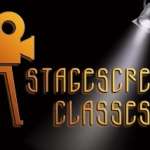There are three major forms of Irish dancing: set dancing, ceil dancing and the performance tradition. Do you have an urge to experience what it is like to be on the floor surrounded by dancers, stepping and swinging through the Eight-hand Jig or the Caledonian Set Read on!
There are two basic types of classes in Irish dancing to be found easily. Group dancing is called ceil (party) dancing or figure dancing, because of the patterns the dancers make. Solo dancing, called step dancing, focuses on learning steps of intricate footwork rather than figures. Irish dancing is unique because step dancers concentrate on footwork and do not use their hands when dancing. Step dancing includes two types of dances: soft shoe, performed in ballet-like, laced leather shoes, and hard shoe, performed in special Irish tap shoes.
Irish dance is performed to traditional Irish music, including reels, jigs, slip jigs, and hornpipes. The slip jig is a light, airy dance, done in soft shoe, and only performed by girls. Hornpipes are only performed in hard shoe, while reels and jigs can be either soft or hard shoe and are danced by boys and girls alike. For ceil dancing, performed to jigs and reels, dancers like to have live music, usually including a fiddle, accordion, piano, and sometimes guitar or tin whistle. Because of the noise of the tapping, the step dancer needs loud musical accompaniment such as the fiddle or accordion.
Irish dancers have to take classes with a certified teacher to be eligible for competitions. In competitions, dancers are judged on their posture, timing, and execution of the steps. But the desire to put the best foot forward has spurred the development of fancier costumes, more intricate steps, and more high-tech footwear. The recent travelling shows featuring Irish dance – Riverdance and Lord of the Dance – have brought on to the stage the professional Irish dancer not bound by the strictures of the commission. Irish dance has found itself a much broader audience, and dance classes that once appealed to a rather small Irish community attract a wide range of people. Irish dance has become a world-wide phenomenon.
Two-and-a-half years ago, Cork woman Alma Gallagher started to learn Irish dancing. “I was a non-dancer who started Irish dancing with the intention of learning ceil dances but I found that I loved solo dances too! Dancing in public and sharing the traditional dances with both adults and children has been a rewarding experience for me”, she told Nightcourses. com.
Now a prize-winning performer with several feisenna and an Oireachtas behind her, Alma looks back and remembers her early days on the boards. “Champion dancers always start very young, but that doesn’t mean that teens and adults can’t learn and enjoy Irish dancing, and even excel at it It’s fun for all ages. In my classes there are adults from about 17-70 years old, and they are very fit and active. Some want to compete, and some don’t. Not only are we mixed in age, we are mixed in levels. I attend classes in both step dancing and figure, or ceili dancing and I love it”, she said.
Figure or group dancing – like Ceil – has always fascinated Alma she says because of “their patterns and the way that some dancers do one thing while others did something else but it all fits together like the inside workings of a musical clock. ”
The first time she tried ceil , remembers Alma, “it was like pulling off a dirt road onto a four-lane motorway! From my muddled little brain to my tangled little feet it was every bit as complex as it looked!”
Her first taste of ceil saw Alma having “to practice my threes and sevens, those basic moves for Irish dancing. To do sevens, you travel sideways and must remember that the right leg leads going right and the left leg leads going left. Practicing solo I did fine, but when I actually danced I found that I often led on the wrong leg. My teacher described my move as one of a dancer in need of a quick trip to the ladies’!”

















